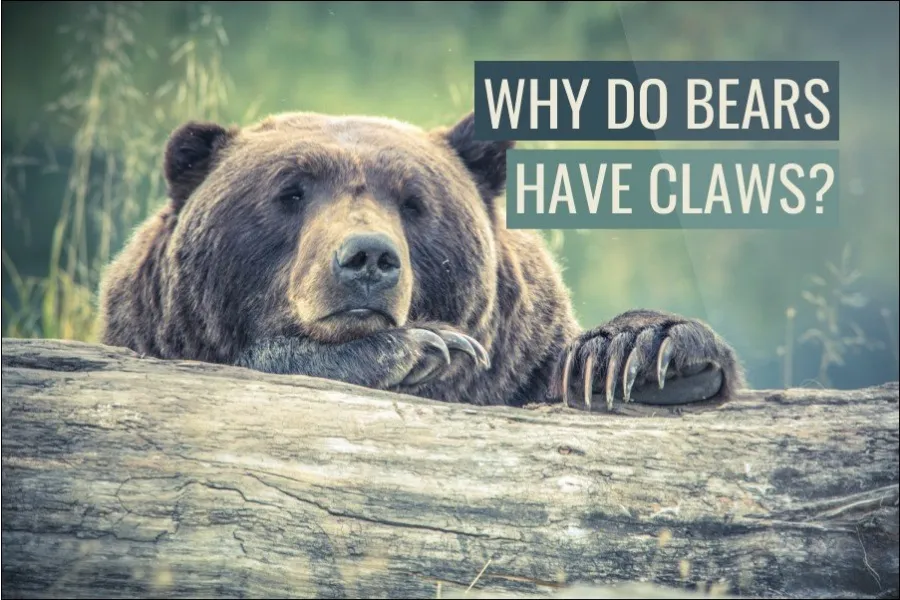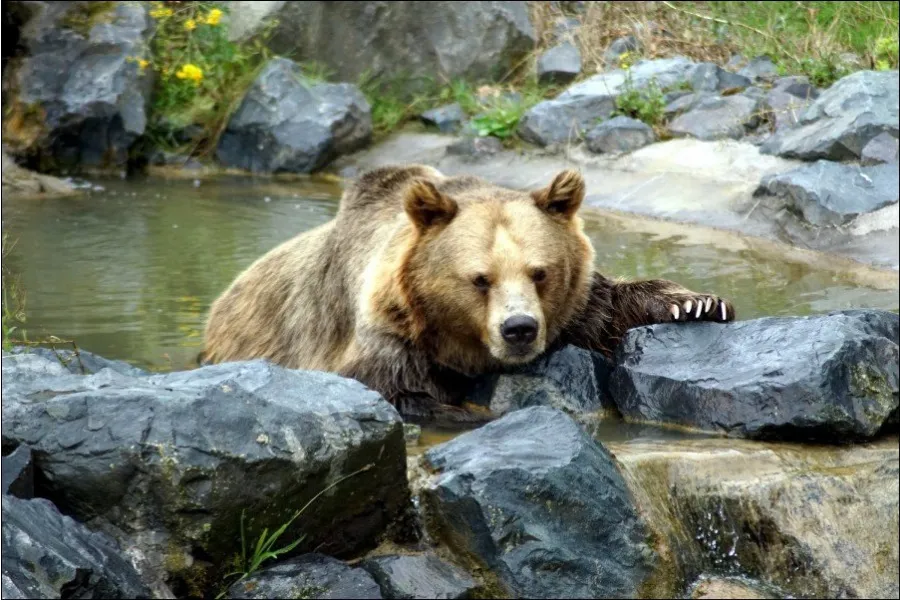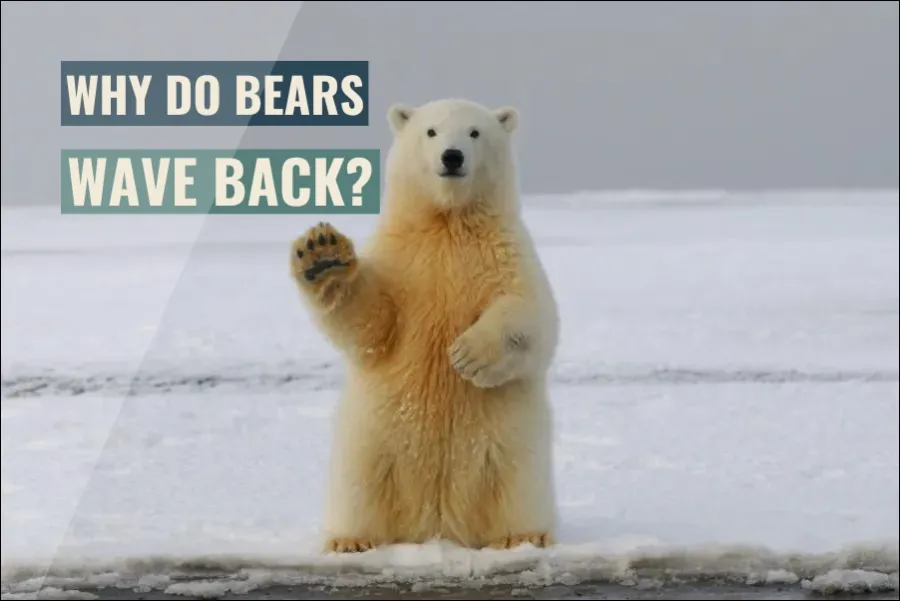
In the same way as humans, bears also walk flat on their feet. Unlike other animals, who walk on their toes, the bear has their whole foot in contact with the ground. The only bear that tends to step more on its toes than its entire paw is the panda. The characteristics of bear paws are easily recognizable, and their tracks are as easy to identify.
Depending on the bear species, the claws are used in a certain way and have evolved into different shapes and sizes over the years. The grizzly bear’s claws are much longer than the black bear’s in order to dig up roots easier, while black bears use their short sharp claws to tear into logs.
Most bears are pigeon-toed and have sharp claws, which make it easier to climb trees. Some bears, like the polar bear, have partially webbed-toes which helps them to swim faster.
Why do bears have claws?
Bear claws have high dexterity in almost the same way as humans have with our fingers. In the same way, we use our fingers for nearly everything; bears use their claws in the same way. Bears are often portrayed as vicious killers and only use their claws for shredding prey and ripping them in half. However, they use their claws in a much more mundane matter.
Bears use their claws for various reasons. To access insects within a rotten log, to dig holes in the ground for storing food, to open fruits, to dig in the ground looking for roots and rodents, preparing their dens before winter, climb trees, but also, of course, ripping into prey.
Depending on the bear species, the use of the claw varies. A black bear has much shorter claws than a grizzly. The black bear uses their claws to tear into rotten logs, dead tree branches, and stumps to find insects. Their short claws make it easier for them to climb trees to escape any danger.
Grizzly bear’s foreclaws are broader, heavier, longer, and straighter than the claws of the black bear. The claws make it easier to grab and hold a slippery fish, for example. A skill that requires high dexterity, like removing skin from a fish is easy.
Difference between claws in different bear species.
You can identify a bear from its front paws. Where some bears have longer broader claws, others have narrow, shorter ones. A Kodiak bear’s claws can be up to 5.9″ (15cm) in length while the length of a black bear’s claw can be up to 1.18″-1.573″ (3-4cm).

Do bear claws retract?
There are no bear species that have retractable claws on either the front paw or the hind paws. The only animal with retractable claws is in the Viverridae family. Asian palm civet, Common genet, Masked palm civet, and Binturong are examples of animals in the Viverridae family. The bear’s foreclaws can be noticed in bear tracks as they are more prominent than the hind claws. In snow, it’s much easier to notice the hind claws. You can tell the species of a bear from their tracks since a grizzly bear has more noticeable claw imprints than the black bear.
🐻 How fast can a bear run? Check our comparison between different bears.
-
Why Do Bears Wave Back At You? (Answered)

Have you ever waved at a bear and received a wave back in return? If so, you may be surprised to learn that bears do not wave in the same
Do bears attack with their claws?
Bears use their claws for almost everything – including attacking other animals and humans. However, bears are omnivores and their diet consists mostly of plant-based materials and not meat from other animals. When bears eat other animals they eat insects and larvae. In cases when they eat larger animals like deer, squirrels, birds, and fish they use their claws in order to attack.
Are bears endangered?
Grizzly bears (Ursus arctos) have been listed as a Threatened species under the Endangered Species Act since the 28th of July, 1975 and was extended in the early 2021. The grizzly is a subspecies of the brown bear, and shouldn’t be confused with other larger subspecies like the Kodiak bear. The Kodiak bear (Ursus arctos middendorffi) is not listed as endangered by IUCN.
The grizzly bear population has decreased from more than 100,000 to less than 1,000 between 1800 and 1975 in the lower 48 states. The primary reasons behind this are related to humans. Habitat loss, construction of roads, and energy and mineral exploration are some of the degradation caused by man. There are also incidents where hunters have mistaken the grizzly for a black bear.
How can I help the grizzly bear?
If you live in a bear habitat, you will need to learn to coexist with bears. There are some techniques to learn and practice. Sometimes bears might visit your town as well, and you will need to know how to treat the situation.
Carry a bear spray
If you enjoy wildlife and want to preserve it, the best way is to respect it. If you are in bear country, there’s always a risk of an encounter. By having a bear spray you are prepared for encounters with wild bears and can minimize the risk of mortality for both of you. Before you enter wildlife, where you can find bear, always carry a bear spray. Practice in your backyard first. I also recommend attaching it into a hulster for quick access. Check out bear sprays on Amazon here.
Be bear aware when camping and hiking.
Camping is a fun way to spend time outdoors and learn about wildlife. If you are camping in bear country, there are some rules to follow.
Bear-proof your campsite and keep it attractant-free. You can do this in four ways.
- Don’t leave food in your tent.
- Always close the tent flaps so bears can’t simply walk in.
- Hang your food pack from a tree, atleast 10 feet of the ground.
- Store your food in bear-proof containers. Check Amazon for some here.
- Clean your camping-site after you’ve used it.
Before you venture on a hike, think about what bears are doing and give them some room. Only use the official trails and leave the wildlife trails to the wildlife.
There may be some seasonal closures that need to be respected.
Help them help themselves
When I am out in the woods, I always carry two water bottles. One water bottle for me and the other for ants. The ant’s water bottle is a mix between water and sugar. 60% sugar and 40% water. Everytime I see an anthill I put out some drops around it so the ants can grab some tasty sugared water inside their hill. This way, the ant population increases, and the bears will have more ants to eat.
Another way to help wildlife and especially bears is to be a guerilla gardener. You will need to check regulations in your area before doing this. When I’m out walking in the forest I always carry seeds with me. When I found blueberry bushes I always plant some seeds nearby the already growing blueberries. This way, the amount blueberries accessible for the bears and other animals increase. Blueberry seeds are pretty inexpensible and is easy to always carry around in a chest pocket.
- Check which blueberries are growing in your forest.
- Contact the forest owner.
- Purchase on Amazon here.

